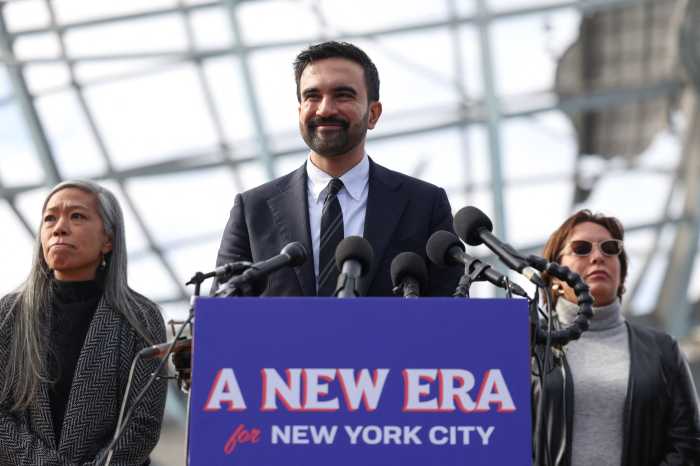BY NATHAN RILEY | Another string of vicious attacks against women — this time on Long Island — has brought prostitution back into the news, but still leaves opinion divided between the prohibitionists and those who support a harm reduction approach to the persistence of paid sex work.
It’s an environment in which the Village Voice recently debunked — really, took apart is a more apt description — a study showing an epidemic of child prostitution that was being used to bolster the prohibitionist argument, while the Suffolk County Police proceeds in fits and starts in a serial murder investigation concerning sex workers whose bodies they are finding dumped near the Long Island beaches. Recent discoveries have raised the number of killings from four to eight.
It is, in some respects, a dispute among friends; the prohibitionists are human rights activists who oppose the exploitation of immigrants, children, and women. Their model is Sweden, which legalized sex work but outlawed the customers by making hiring a hooker a crime. Sex workers committed to staying in the business are obviously not happy with Sweden, but also believe that country and the prohibitionists who champion its policies are naïve if they think they are on track to ending prostitution outright.
Harm reduction draws its inspiration from public health efforts aimed, for example, at substituting clean syringes for dirty ones or at reducing the risk of HIV transmission among sexually active people. Advocates of the harm reduction approach point out that sex workers and their clients come from all walks of life, and argue that their interactions are not all based on a monolithic model of exploitation. Prohibition, they conclude, will simply drive the activity deeper underground, inevitably increasing its risks. Asked to point to models for success, they name Germany and Holland, where prostitution is legal.
The disagreements over policy are accompanied by a profoundly differing view of the basic facts. Prohibitionists believe sex workers invariably face coercion from pimps who reap enormous profits at their expense. That worldview was bolstered by the arrest of more than a dozen in Madrid last August on charges of luring 80 Brazilian men and transgenders to Spain and forcing them into sex slavery; many of the victims told authorities they had no idea they were expected to be prostitutes when they accepted the offer to travel across the Atlantic for work. The ringleaders were charged with enforcing their control through threats of death.
The prohibitionists believe that the Spanish ring represents the dominant reality among sex workers, but harm reductionists suggest that rather than stigmatizing businesses that work with hookers by terming them “traffickers,” the law should make provision for enterprises that offer sex workers protection from both abusive pimps and the sort of psychopaths who would slaughter multiple women on Long Island. The agency convicted in the Eliot Spitzer scandal was hardly exploiting its sex workers — reports indicate clients were carefully screened and the women at work earned splendid incomes. For supporters of sex workers’ rights, the Suffolk County killing spree demonstrates the woeful need for basic protections that are at odds with a prohibitionist law enforcement approach.
The prohibitionists, meanwhile, fault the Craig’s Lists of the world for facilitating abuse by expanding the market for commercial sex.
Clearly, an enormous gap exists among those interested in this issue when it comes to deciding what is to be done.
The prohibitionist study the Voice took down in its March 23 issue had amped up the stakes in the prostitution debate by alleging that escort agencies specialize in underage hookers. The newspaper was, in short order, able to discredit a dubious methodology based on simple-minded extrapolations based on visual judgments of the ages of prostitutes pictured in advertisements.
The opponents of sex trafficking quickly recognized the weakness of their own study and no longer defend it. But they clearly remain convinced that fear of underage sexual exploitation is one lever that could move public opinion in the prostitution debate.
Should that be true, it could prove unfortunate even for those youth who are engaged in sex work. A recent federally-funded study of this population, “Commercial Sexual Exploitation of Children in New York City,” found varied patterns at work. The researchers discovered that despite being a very vulnerable population, these sex workers shied away from labeling anyone a “pimp;” adults in their business were viewed more as “market facilitators.”
Ambivalence toward the adults was clear; some youngsters said they were protected from abuse and “spoke somewhat fondly” about them. Pimps “clearly dominated those youth who worked for them,” the study found, but they “were not the dominant actors in New York City that the researchers had imagined.”
One of the researchers, Ric Curtis, a John Jay College anthropologist, reported that the most common way teenagers enter the “life” is though a friend. “They did not appear to have or need pimps; they were already deeply involved,” he wrote. Many of these teen-age sex workers recognized each other and formed a loose community. “There was a widespread ethos among youth of helping each other out, even if they did not know each other very well,” the report stated.
Harm reduction and prohibition would approach this population from vastly different vantage points. The public health approach seeks to leverage existing peer relationships to distribute knowledge about safe sex and increase engagement with medical and housing services that could offer alternatives. Adolescents in the “life” may want out, but they don’t necessarily want a “drug-free-be-home-by-11” life. There are people with the skills to work with such youngsters, but more often than not the police, who play the lead role in the prohibitionist model, simply disrupt connections these youths have with life-saving options.
If nothing else, the results to date from the prohibitionist approach should be cause for humility.
“The City can rightfully claim to have made progress in addressing the most blatant sex markets,” the study of youth sex work found, but “there is scant evidence that the overall sex market has been reduced. All evidence points to the opposite conclusion: that the sex market is bigger and more multi-faceted than ever.”






























